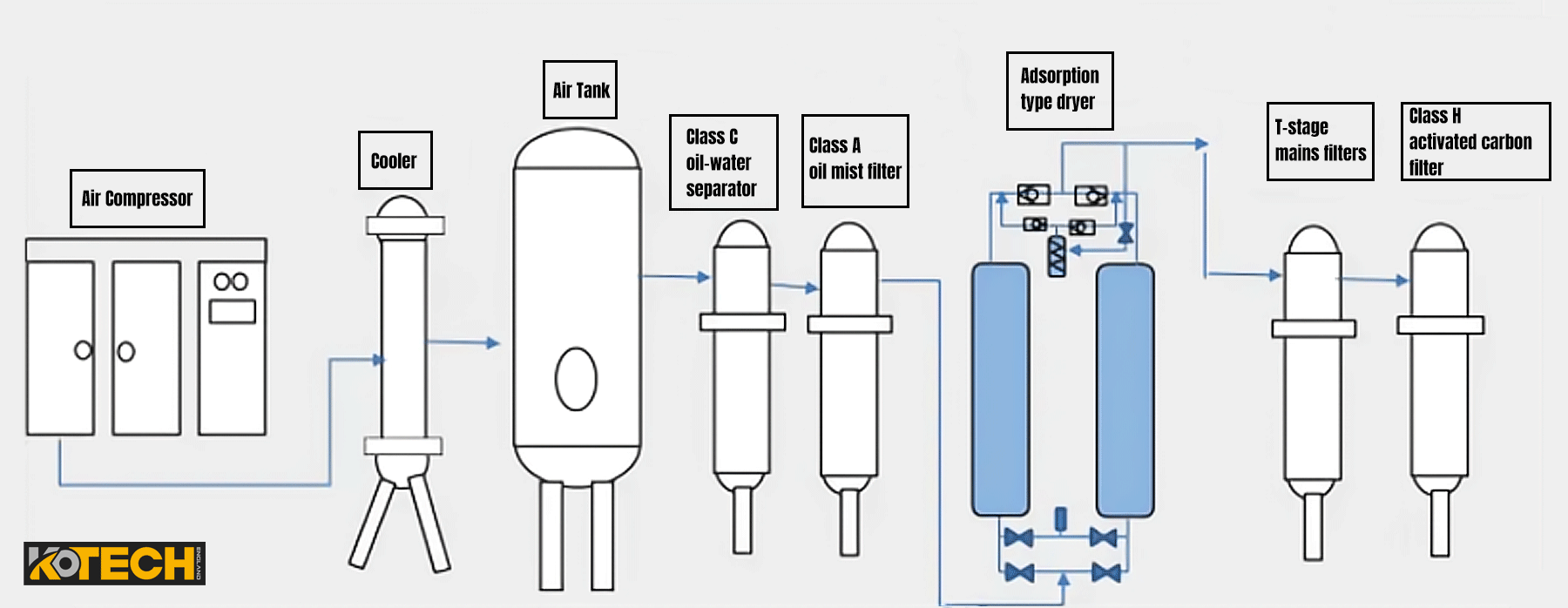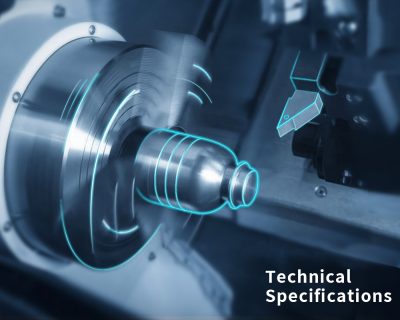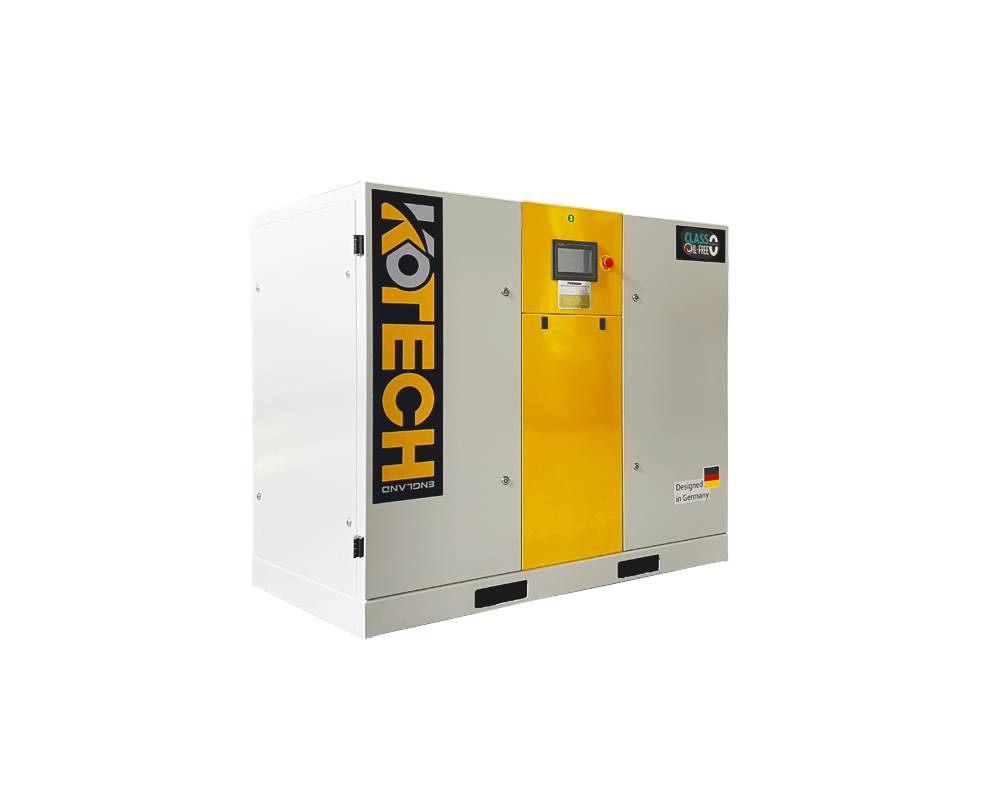How does the air compressor work?
TABLE OF CONTENTS
- 1. Principle of compressed air generation
- 2. Major Types of Air Compressors and Their Characteristics
- 3. The wide application of compressed air in various industries and its value
- 4. Refined Management of Air Compressors and Energy Efficiency Improvement Strategies
- 5.What is the Difference Between PSI and CFM in the Field of Air Compressors?
- 6. Professional Providers – Kotech and Oil-free Scroll Air Compressor Solutions
- FAQs (Frequently Asked Questions)
- 1. Can oil-free air compressor be used in any environment?
- 2.What industries are oil-free scroll compressors suitable for?
- 3. Is the micro-oil screw compressor + after-treatment equipment suitable for use in an oil-free environment?
- 4.How to maintain the oil-free scroll compressor?
- 5. How do rotary screw air compressors work diagram?
1. Principle of compressed air generation
The principle of operation of an air compressor, as the core of compressed air production, is deeply rooted in the laws of physics.
According to the (Boyle-Mariotte law), when the temperature of a gas in a closed system is kept constant, the pressure of the gas is inversely proportional to the volume it occupies.
How does the air compressor work? An air compressor produces compressed air at a high pressure by compressing the intake air into a smaller volume. This compression is achieved by means of internal components driven by an electric motor or other power source.
In this process, air compressor performance indicators include the compressed air flow rate per unit of time (measured in standard cubic metres per minute (m³/min) or standard cubic metres per hour (m³/h)) and the output air pressure (expressed in bar bar or megapascals (MPa)).
While ensuring the efficient and stable operation of the air compressor, it is also necessary to consider the design details of the equipment, such as reasonable suction and discharge valves, efficient transmission mechanism, and excellent cooling and lubrication systems, which are the key elements in determining whether the air compressor can maintain high-efficiency, energy-saving, and long-life operation in continuous high-intensity work.

2. Major Types of Air Compressors and Their Characteristics
There are various types of air compressors in the market, including piston, screw, and centrifugal in three mainstream forms.
Screw-type air compressors are favoured by modern industry for their high efficiency, low noise and stability, and their working principle relies on two precision-meshed screw rotors, which change the volume of air to be compressed through the process of rotation.
High-quality screw compressors can achieve more than 95% isothermal efficiency under ideal working conditions, and are equipped with highly efficient oil-air separation and cooling lubrication systems, which significantly reduce equipment losses caused by friction and overheating.
In contrast, piston compressors use piston reciprocating linear motion in the cylinder, through the change of cylinder volume to achieve air compression, although the structure is relatively traditional, but in the small and medium power applications still has a good cost-effective and flexible.
The centrifugal air compressor relies on a set of high-speed rotating impeller, through the centrifugal force to make the gas radial acceleration and continuous non-contact compression, because of its large flow, continuous work and good stability and other characteristics, commonly used in large-scale industrial projects and energy production areas.
3. The wide application of compressed air in various industries and its value
Compressed air plays a vital role in many areas of modern industry and social life.
Statistics show that nearly one-third of all industrial equipment relies directly or indirectly on compressed air to drive and assist it.
Compressed air is an indispensable power source in manufacturing industries such as pneumatic tools and automation equipment in automotive production lines, as well as in conveying, mixing and packaging in food processing.
Compressed air is particularly valuable in specialised industry applications.
For example, in deep-sea diving, compressed air is a core component of the diver’s life support system; in the medical field, the operation of instruments such as ventilators and dental surgical equipment also relies on compressed air.
In addition, compressed air energy storage systems, as a new type of energy storage technology, have begun to play an increasingly important role in electric power systems, where the process of compressing and expanding air enables the storage and release of electricity.

(Learn More About the Many Applications of Compressed Air)
4. Refined Management of Air Compressors and Energy Efficiency Improvement Strategies
In order to ensure that air compressors always maintain an efficient and stable working condition, it is crucial to develop and refine a detailed equipment management and maintenance strategy.
This involves regular cleaning or replacement of air filters to prevent impurities from entering the compression chamber and triggering wear and tear within the equipment; at the same time, scientific monitoring and reasonable replenishment of lubricating oil ensures that all moving parts are adequately lubricated in order to reduce equipment failures and extend service life.
Research results show that the implementation of standardised preventive maintenance can effectively reduce unplanned downtime of air compressors by about 35%, significantly improving the operational efficiency and production stability of the equipment.
In addition, with the rise of environmental awareness and the growth of energy-saving demand, the energy efficiency of air compressors has become an important direction of technical research and development.
The air compressor with frequency conversion speed control technology can adjust the speed according to the actual demand, avoiding the waste of energy when the load fluctuation, compared with the traditional fixed-speed air compressor, its energy-saving effect can reach more than 25%.
At the same time, with the development of new material technology and design optimisation, such as the use of high-performance materials to manufacture high-temperature and wear-resistant parts, as well as improving the overall energy efficiency ratio of the equipment by improving the design of the cooling system, they are all contributing to the energy-saving process of the air compressor, which helps enterprises to reduce operating costs and practice the concept of green development.
In summary, through the comprehensive interpretation of the air compressor, we not only deepen the understanding of the principle of compressed air generation, but also understand its wide range of applications in various industries and its important value.
Paying close attention to the latest progress of air compressor technology, especially the innovations in energy saving, environmental protection and intelligence, will strongly push us to make smarter and more efficient use of compressed air resources, and jointly help the sustainable development of society and economy.

5.What is the Difference Between PSI and CFM in the Field of Air Compressors?
In the realm of air compressors, PSI (pounds per square inch) and CFM (cubic feet per minute) serve distinct purposes. Let’s explore their meanings and how they relate to air compressor performance:
PSI (Pounds per Square Inch):
- PSI measures pressure.
- It quantifies how many pounds of force are exerted within a specific area (typically one square inch).
- For air compressors, PSI represents the pressure generated by compressed air.
- For instance, if an air compressor has a rated output of 100 PSI, it means it delivers 100 pounds of pressure per square inch.
- Note: PSI is commonly denoted in lowercase letters (psi) in air compressor specifications.
CFM (Cubic Feet per Minute):
- CFM indicates the volume of air moved per minute.
- It measures the airflow in cubic feet.
- For air compressors, CFM signifies how much air the compressor can move within a minute.
- For example, if an air compressor is rated at 30 CFM, it can circulate 30 cubic feet of air per minute.
The Relationship Between CFM and PSI:
- CFM and PSI are interrelated to ensure proper air compressor operation.
- To achieve optimal performance and efficiency, both CFM and PSI must be sufficient.
An Analogy to Understand the Relationship:
Imagine you have a garden hose and turn on the water.
Water flows out, possibly reaching a few feet beyond the hose end—perfect for filling a bucket or watering can.
Now, if you pick up the garden hose and use your thumb to restrict the hose end’s space, reducing the area through which water exits, the water pressure will increase significantly.Even with the same water volume produced by the hose, the additional pressure propels the water faster and farther—ideal for tasks like watering plants!
While this analogy uses water to describe the relationship between CFM and PSI, the concept applies similarly to air.
In summary, understanding both CFM and PSI is essential for ensuring an air compressor operates effectively. Whether you’re powering pneumatic tools or optimizing industrial processes, these parameters play a vital role in achieving efficient air compression.
6. Professional Providers – Kotech and Oil-free Scroll Air Compressor Solutions
As a well-known air compressor supplier and service provider in the industry, Kotech Air Compressor Manufacturer, since its establishment in 2014, has always been committed to providing advanced, efficient and reliable compressed air solutions for air compressor users.
With its factory located in Shanghai, kotech has successfully won wide recognition and trust in the market with its profound industry experience and professional technical capabilities.
Especially worth mentioning is that kotech has a significant market position in the field of oil-free scroll air compressors.
The oil-free scroll compressor product series sold by Kotech, relying on the advanced scroll technology, realises the compression process without any lubrication oil, which perfectly meets the stringent requirements for clean oil-free compressed air in industries such as medical, pharmaceutical, food processing, electronics and semiconductor.
Jump to your selection➷
Applications of Air Compressors in Medical
Applications of Air Compressors in pharmaceutical
Applications of Air Compressors in Food and Beverage
Silent Oil Free Scroll Air Compressor
Clean Air 100% Oil-Free: Oil-free type compressors can supply clean air.
Kotech compressor product quality fully reflects the most modern technology, its design and manufacturing processes are executed in accordance with the requirements of ISO9001 standard.
FAQs (Frequently Asked Questions)
1. Can oil-free air compressor be used in any environment?
Water lubricated oil-free screw air compressors rely on water for lubrication. However, they are not suitable for use in temperatures below 1 degree Celsius as they may freeze. They are suitable for use in temperatures above minus or 1 degree Celsius.
They are therefore recommended for use in oil-free industrial products, pharmaceutical, hospital or food industries.
2.What industries are oil-free scroll compressors suitable for?
Oil-free scroll air compressor models are small and commonly used for air volumes ranging from 0.1 to 2 cubic meters per minute in industries such as pharmaceuticals, hospitals, food, and industrial products.
Of course, by choosing Kotech, we can provide you with a variety of solutions!
3. Is the micro-oil screw compressor + after-treatment equipment suitable for use in an oil-free environment?
After-treatment equipment is added to the micro oil screw air compressor. Although the compressed air system will always contain oil, simply changing the filter element can reduce the oil content.
However, the oil content tends to increase with prolonged use, making it unsuitable for oil-free working conditions.
4.How to maintain the oil-free scroll compressor?
Here is the maintenance plan and specific operation instructions for the oil-free scroll air compressor. Be sure to collect it!
Every 6 months, running time 1000 hours
1. Operate the safety valve
2. Clean the compressor
3. For the compressor with built-in dryer: wipe or blow clean the condenser warping surface; check and clean the electronic sewage device
Every year, 2500 hours of operation
1. Replace the air inlet filter
2. Test the safety valve
3. Test temperature protection and motor overload
4. Check the tension and condition of the V-belt
Every 2 years, 5000 hours of operation
Maintenance Plan A
1. Replace the V-belt
2. Replace the check valve
Maintenance Plan B: 8bar and 116psi compressor
1. Clean the fan, fan piping and mainframe heat sinks
2. Lubricate the driving scroll bearing
Maintenance Plan B: 10bar and 145psi compressor
1. Replace the air outlet pipe and plastic insert of the main body
2. Clean the fan, fan pipeline and heat sink of the main engine.
3. Lubricate the drive scroll bearing and crank pin bearing with grease.
4. Replace the leaf tip sealing device and dust sealing device
5. Replace the inlet sealing device
5. How do rotary screw air compressors work diagram?
Click on the quick link to see a high-definition animation of the working principle of a GEA screw compressor in Germany.




